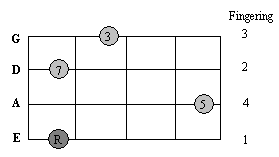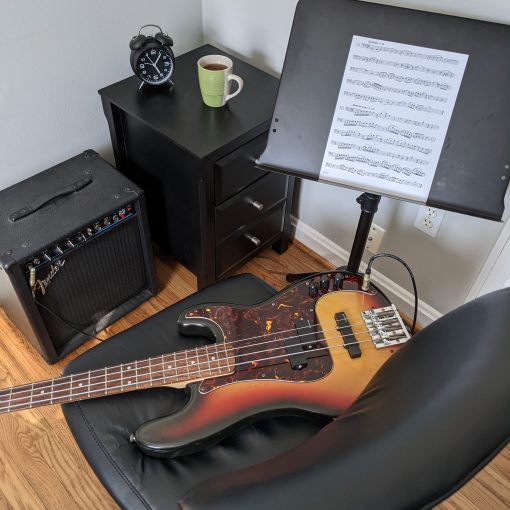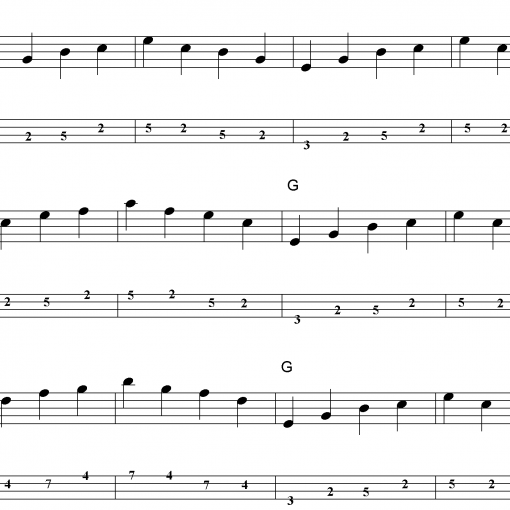Level: advanced
No part of this lesson may be copied, reproduced, or distributed in any form without consent of the author. Copyright © Doug Ross, all rights reserved.
Okay, so you’ve now got a handle on your basic 3 and 4 note chord symbols, but you’re still getting confused by some of the more complex chords used in jazz charts. Unfortunately, there is even less universal standardization with jazz chord symbols than there is with simple chords, but I’ll try to give you a foundation here. When you encounter exceptions (which you inevitably will), ask your piano/guitar colleagues for their interpretations.
One very important variant of the chord symbols covered already is the “slash” chord. When a chord symbol has a diagonal slash through it, the note underneath (to the right of) the slash is the note for the bassist to play. Remember, the chord is above the slash, and the bass note is below. For example, on the 3rd beat of the first bar of this tune, the composer wants you (the bassist) to play a B, even though the rest of the band is playing a G major triad.

Usually, the note below the slash will be a basic chord tone other than the root. However, it could be something else. In any case, it must be very important for you to play this particular note, or else they wouldn’t have gone to the trouble of specifying a bass note, right? So play it!
Now on to “jazz chords”. When I say jazz chords, I’m mainly talking about chords with extensions above the 7th, though of course these can be used in other types of music as well. If we keep stacking thirds on top of our basic 7th chords, we can add 9ths, 11ths, and 13ths for more color. Unless otherwise indicated, assume that these are major 9ths, perfect 11ths, and major 13ths. Here are examples of some chords with extensions. Notice that the notation is the same as with basic four note major, minor, and dominant chords, except the number 7 is now replaced by the highest extension:

If you want to alter (raise or lower) any notes in a chord, the alterations are normally written in parentheses to the right of the chord symbol. Parentheses may also be used to indicate notes to be omitted, or extra notes to be added. An example would be the C(add9) chord from the previous lesson, which adds a 9th to a triad. The difference between C(add9) and CMaj9 is that the add9 chord has no seventh. Here are several examples of chord symbols with alterations.

There are many more possibilities, but I think you get the idea. Finally, I’d like to mention a few special unique chord symbols. The “alt” chord is an “altered” dominant, meaning that any 5ths or 9ths used must be either flatted or sharped, but the specific alterations to use are left up to the performer. “6/9” and “min6/9” chords are spelled out below for you. And polychords, not to be confused with slash chords, indicate two complete chords to be played simultaneously. Polychords are often indicated with a horizontal, rather than diagonal line. The bassist will probably play the root of the “bottom” chord usually, but you’d better ask your musical director what to do if you see one of these! Good luck.




